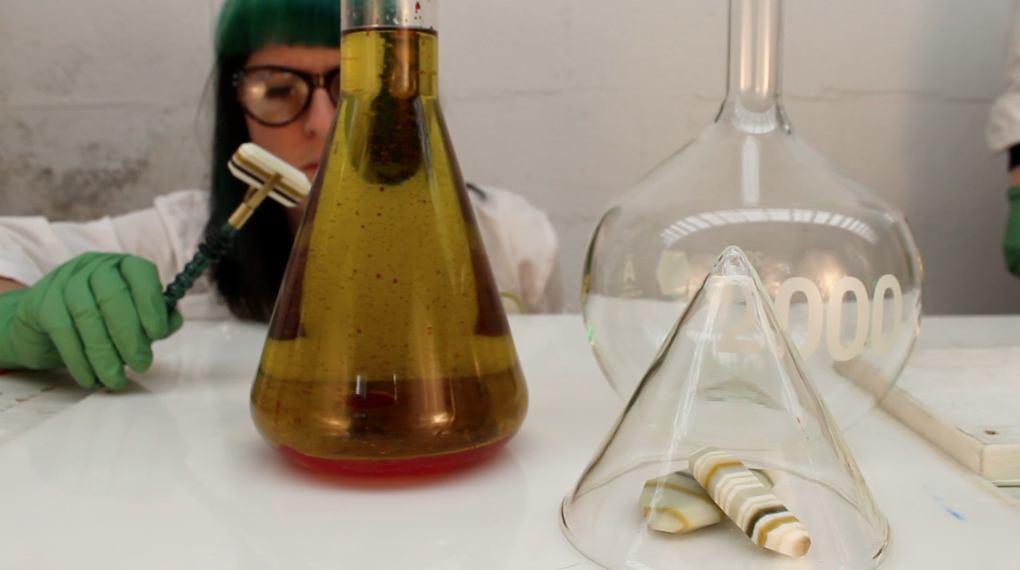
An Artist Who Welds Jewelry, Glass and Performance Together
Rader met with reporter Eleanor J. Bader in early June to discuss her art, her philosophy, and her sources of inspiration.
Eleanor J. Bader: Let’s start with some personal basics. Although you’re now living in Brooklyn, NY, you’re not a city native.
Rachel Rader: I grew up in a really great liberal pocket in the middle of North Carolina, a suburb of Durham. The state is beautiful, with rolling hills and beautiful beaches, but it can be a little funky in terms of politics. Still, I loved growing up there. I lived there from the age of eight until I was 16, and I feel fortunate to have grown up in a place where my brother and I could hop on our bikes and play games in the woods. It felt really safe, with lots of wide, open land.
My dad is an architect, and by the time I was ready for college, we were living in Virginia. We moved a fair amount during my childhood; every time my dad got a big job we’d relocate. I knew I wanted a degree in the arts, and at VCU I was able to take advantage of amazing programs using every possible material—glass, metal, fiber, wood, etc. I was also able to study Comparative Religion at VCU.
After I graduated college in 2006, I moved to Seattle, which is a hub for glass arts, one of the materials I love, and there was a lot of opportunity for me to learn more about technique there. I assisted a number of glass artists while simultaneously maintaining my own art practice.
EJB: What works were inspired by your time there?
RR: One major project, “Mermaid Food,” was inspired by the coastline of the Pacific Northwest. In this series, I embodied the persona of a sea goddess version of Marie Antoinette. With the use of hot glass I made a series of cakes, tarts, and other underwater desserts that dripped with rhinestones and glass barnacles. At the center of my alter ego’s feast was a multi-layer cake that literally dripped water from orifices in this sculptural decadence. This installation was my invitation to the audience to step into another world and imbibe in an underwater fantasy. This series was shown at the Pratt Fine Arts Center Gallery in Seattle in 2010. It later traveled to the Pittsburgh Contemporary Craft Museum, the Virginia Museum of Contemporary Art, and the Racine Museum in Wisconsin. Most of the Mermaid Food collection was sold, and it was a really magical experience.
After several years in Seattle, I moved to Portland, Oregon, to work for Bullseye Glass, a business that teaches classes in glass kiln-forming and manufactures glass for artist use. When they opened a new location in Mamaroneck, New York, they moved me out here. That was in 2013.
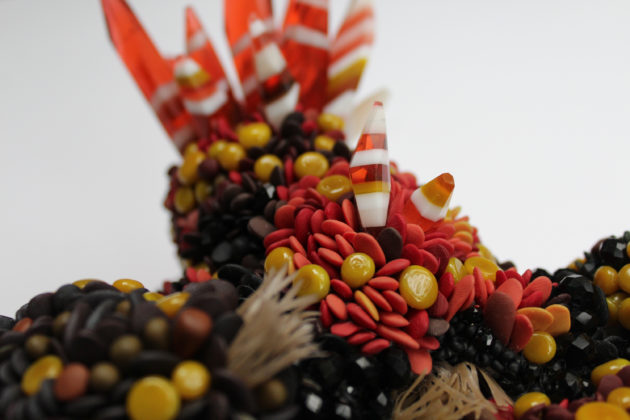
EJB: Though you work full-time as the Art Center Manager at UrbanGlass in Brooklyn, you also continue to create your own work. Can you describe your current project, Ancient Truth investigators, or ATI?
RR: After the Mermaid Food series, I realized that I wanted to make things that appeared closer to reality, that prompt the viewer to question what is and what is not real. I’m someone who always asks a lot of questions and I wanted to create a platform in which to find and investigate ancient truths.
At VCU, as a student of comparative religion, I had the opportunity to research how many cultures tell stories that are hauntingly similar, such as the tale of the great flood. It’s a story that repeats in different texts and in different cultures, which tells me that something cataclysmic must have happened. I find that intriguing.
Through the project, Ancient Truth Investigators, I explore the use of wearable art, sculpture, and objects made of glass, fiber, and metal that look like bizarre geological specimens that come from the earth. They collectively generate a mythology. I’ve also created an alter ego—I’m The Chief Investigator—she’s the central force in this ongoing investigation that blurs lines between geology, anthropology, and new age mysticism. I’ve performed as this green-haired scientist I simply call “The Chief,” for short, in numerous venues including the Glass Art Society Conference in 2017 in Norfolk, Virginia, Wheaton Arts in New Jersey, and in New York City’s MAD (Museum of Arts and Design).
The project is my way of maintaining a childlike interest in the world. I hope people will see ATI, have some fun, explore the nuggets of truth that unite us as human beings, and maybe explore some big themes. The project is meant to be narrative-driven and is ongoing. Of late I have been obsessively exploring Autonomous Sensory Meridian Response (ASMR), the ways people react physically to particular sounds, things like whispering, tapping, hair brushing, that can provoke a sensory reaction that carries us back to another time and place. ASMR is currently the subject of a great deal of scientific research.
EJB: I first saw your work when I visited UrbanGlass and fell in love with the glass and metal jewelry you’d made. Are you still making jewelry?
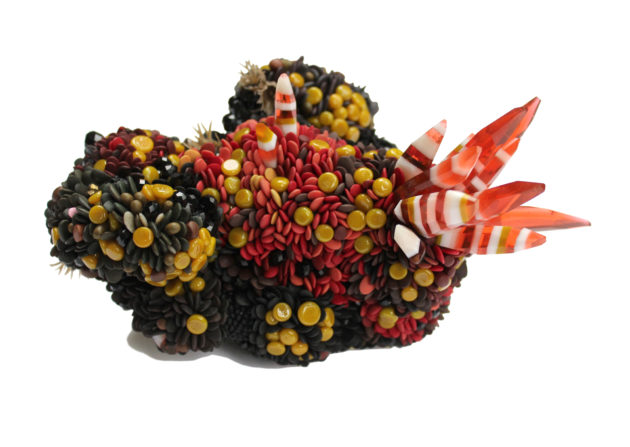
RR: Yes. Jewelry is one facet of Ancient Truth Investigators. I wanted to play with the idea that someone can wear a small artifact from the ATI narrative, and in doing so carry the story with them. Of course, some people who buy a piece of my jewelry simply appreciate these pieces as adornment, and that’s okay. But my goal is to create jewelry that is a part of something bigger.
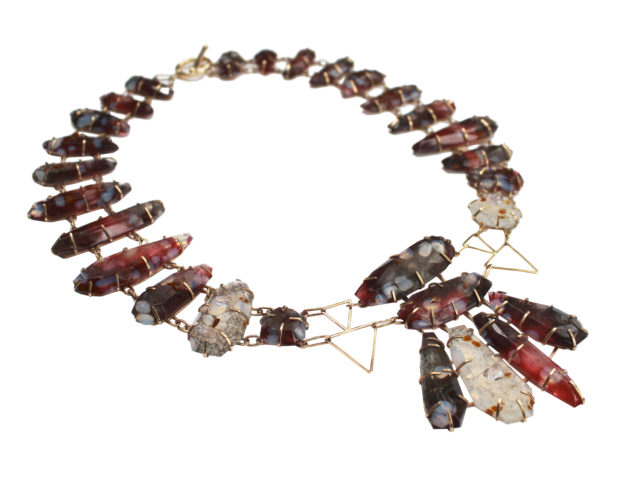
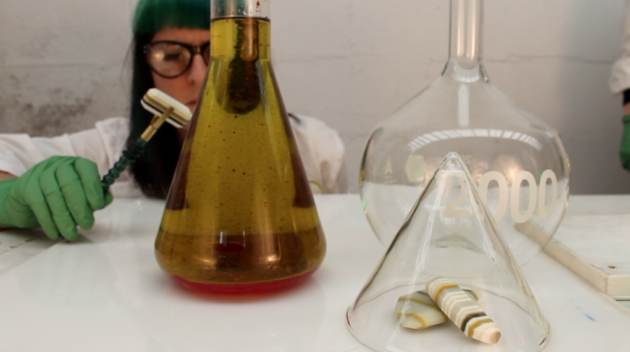
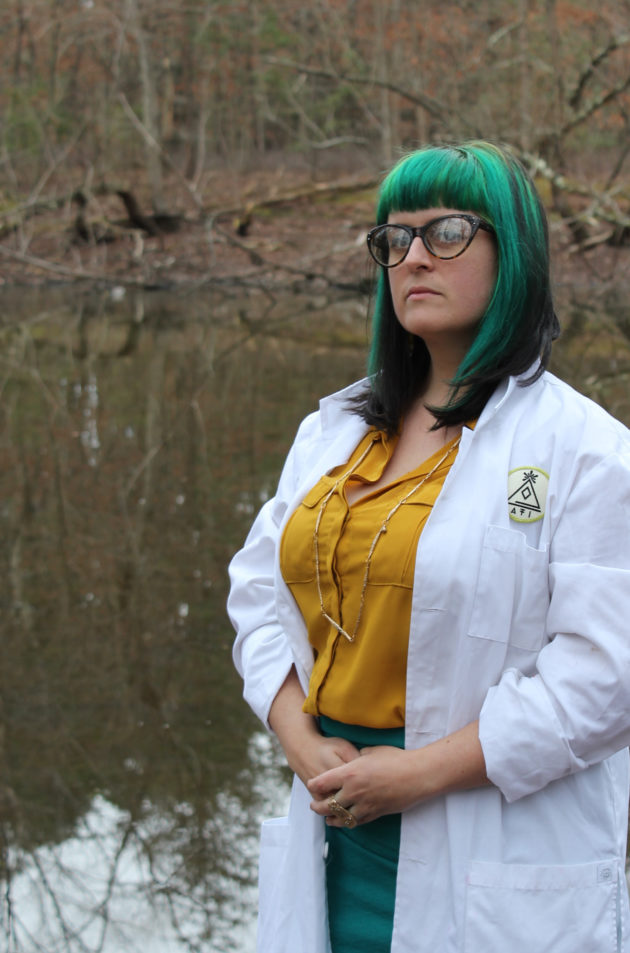
EJB: Is there a political dimension to ATI or your other work?
RR: I want ATI to be accessible to everyone, regardless of politics, and my idea is to seek ancient truths rather than current political truths, but of course, I ultimately don’t have control over how people will view my artwork. At the same time, strong women have influenced me. When I am in character as The Chief Investigator, it is very important that I project a strong female presence. I’ve been very much influenced by the fact that there were pre-patriarchal societies, communities that were organized around the goddess, female figures who influenced spirituality and spiritual life. But I’m not trying to make ATI specific to a particular religious or political slant.
EJB: Can you talk about the artists and others who have influenced you and your work?
RR: I’ve been influenced by the Guerrilla Girls, and as a student at VCU, professor Susie Ganch taught me to find meaning in the objects I create. She encouraged me to understand why I was making what I was making. I’ve been influenced by Graham Hancock, a British writer whose books, Underworld and Fingerprints of the Gods have been enormously important to me. Lastly, Marina Abramovic, the world-renowned Serbian performance artist, has been quite important to me.



